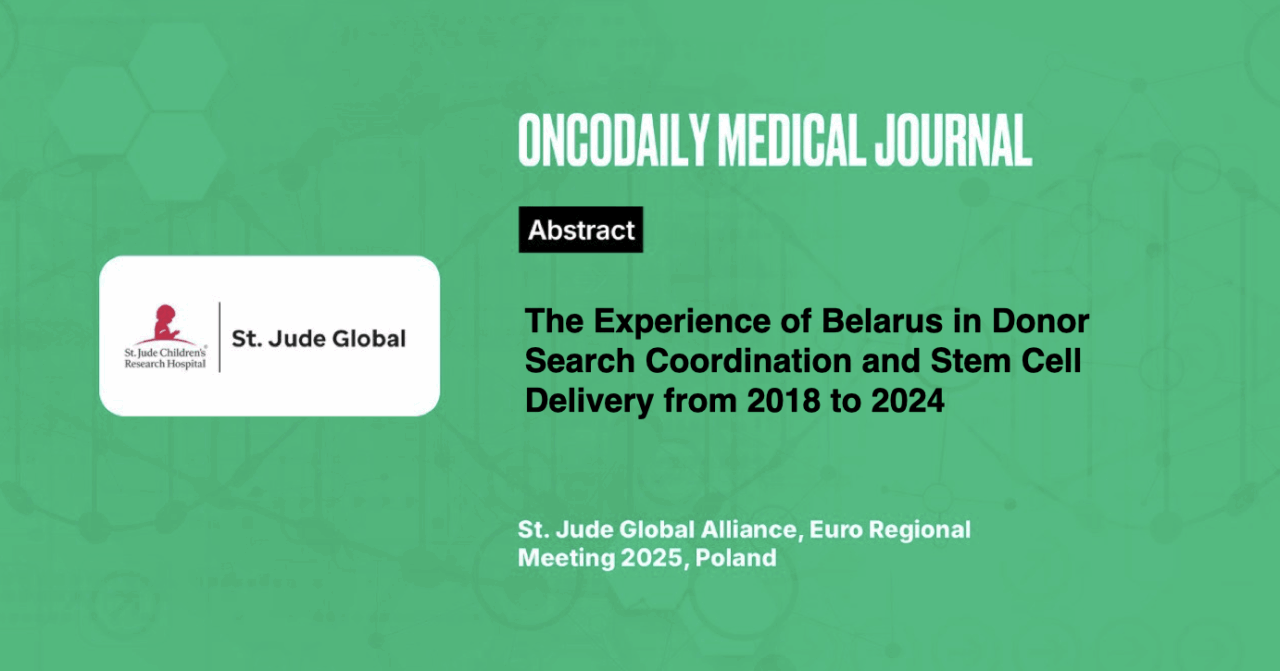The Experience of Belarus in Donor Search Coordination and Stem Cell Delivery from 2018 to 2024
Abstract
Introduction: Hematopoietic stem cell transplantation (HSCT) is a complex procedure, even when a matched related donor is available. The process becomes significantly more complicated when stem cell products from unrelated donors are required, as it involves addressing medical, logistical, transport, financial, and communication challenges. The COVID-19 pandemic profoundly impacted the standard logistics involved in HSCT procedures, necessitating modifications to existing protocols.
Additionally, subsequent political, social, and economic changes have further emphasized the need for a fundamentally new approach to delivering cell products and performing allogeneic unrelated transplants for pediatric and adult patients in the Republic of Belarus.
Methodology: All hematopoietic stem cell transplants (HSCTs) in Belarus are conducted at two medical institutions. The Belarusian Research Center for Pediatric Oncology, Hematology, and Immunology specializes in treating pediatric, adolescent, and young adult patients with oncological, hematological, immunological, and genetic disorders. Meanwhile, adult patients diagnosed with malignant hematological conditions receive HSCTs at the Minsk Scientific and Research Center for Surgery, Transplantology, and Hematology.
Results: The gradual expansion of the donor pool in the Republican database “Central Register of Hematopoietic Stem Cell Donors” to 100,000 donors has increased the share of Belarusian donors by 3.4 times from 2018 to 2024, compared to the registry’s initial years of operation (2013-2017). Specifically, the number of Belarusian donors rose from 7 to 24.
However, this remains insufficient to fully meet transplant needs for a country with a population of 9.5 million, including 2.2 million children and adolescents under the age of 18. To address this challenge, establishing an effective communication route with the European donor bank has become a primary goal for donor search coordinators. This required meticulously exploring available transport options and engaging in thorough preparatory work to coordinate efforts between the Ministry of Health of the Republic of Belarus, the Border Service, the State Customs Committee, state and commercial banks, and medical institutions involved in the process.
The most efficient method for delivering stem cells involves transporting them from collection centers in Europe via courier services. The cell product is flown to Lithuania, where it is transferred to a courier from a medical institution. The courier then declares the imported cell product at an operational border checkpoint, typically using regular passenger buses to cross the land border. This process ensures that stem cells remain viable and are delivered within 24 to 48 hours.
This established delivery protocol, along with access to the Hap-E Search platform, has significantly simplified and expedited the search process for unrelated donors while improving request handling and communication efficiency. Germany and Poland have emerged as the primary donor sources for Belarusian patients, with 124 and 49 successful deliveries, respectively, over the last six years (2018-2024).
Conclusion: Effective communication, mutually beneficial collaboration, and well-established work processes are crucial for donor search coordinators. Additionally, the experience gained in crisis management has enabled the team to respond swiftly to changing conditions while maintaining efficiency in the HSCT donor search and delivery process.





